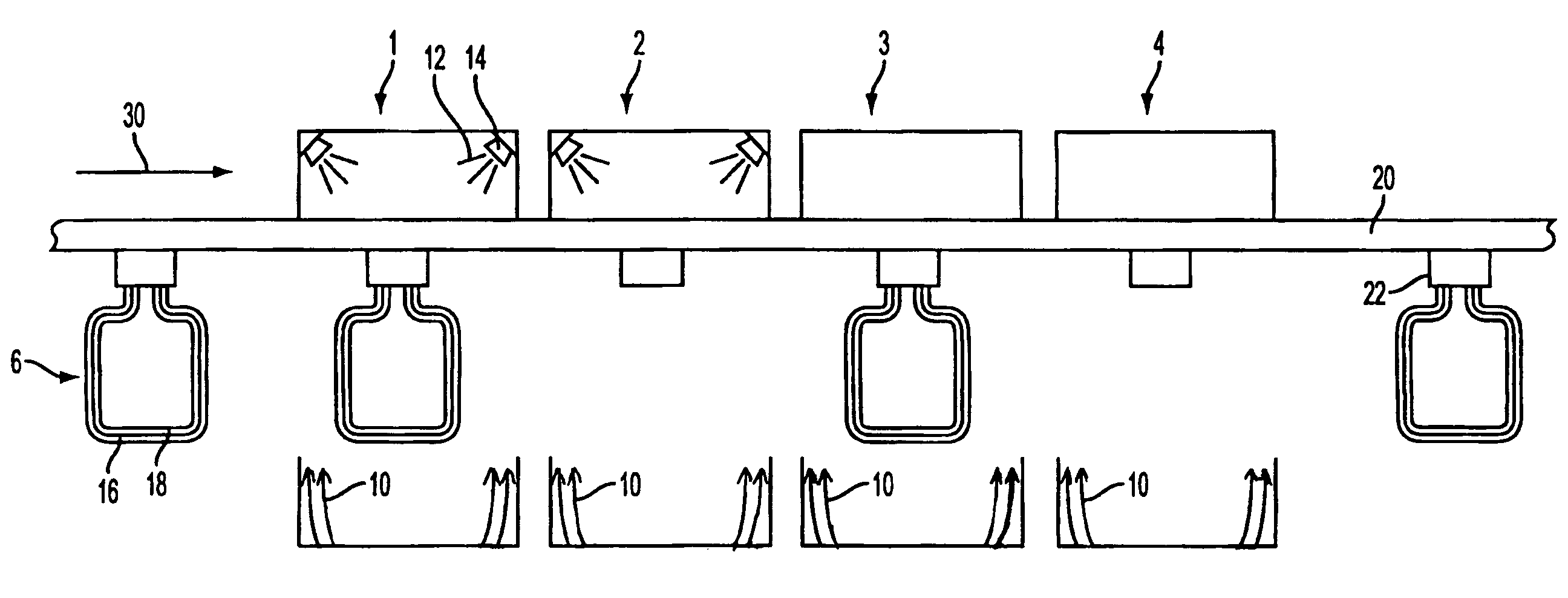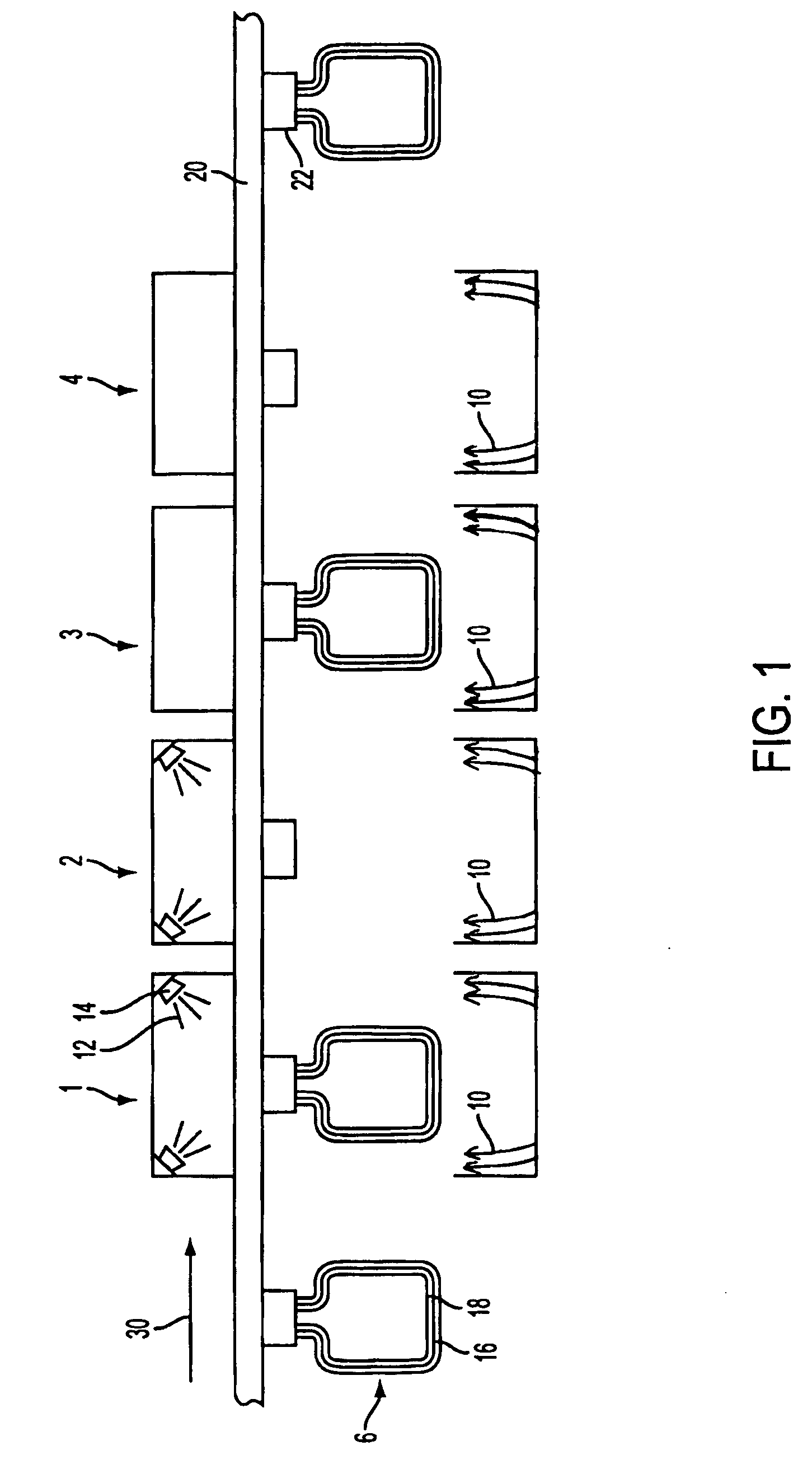Controlled infrared/fluid coating cure process
a technology of fluorescence coating and infrared light, which is applied in the field of curing a heat curable coating, can solve the problems of long shelf life of food products, undesirable and detrimental gas permeability, and the cost of polymers with low gas permeability to use as the only component of food packaging materials, etc., and achieves good optical quality and good optical quality. , the effect of not substantially deformed
- Summary
- Abstract
- Description
- Claims
- Application Information
AI Technical Summary
Benefits of technology
Problems solved by technology
Method used
Image
Examples
Embodiment Construction
[0028] In describing preferred embodiments of the present invention, specific terminology is employed for the sake of clarity. However, the invention is not intended to be limited to the specific terminology so selected. All references cited herein are incorporated by reference as if each had been individually incorporated.
[0029] Curing an appropriate curable coating on the surface of a substrate comprised of a low cost polymer used for packaging can be used to produce a food packaging material with good gas barrier properties, for example, a food packaging material with low permeability to oxygen and carbon dioxide. The curable coating can cure to form a crosslinked polymer. For example, the curable coating can be an epoxy formulation. A high fraction of cure is desirable and often necessary. If the coating is not fully cured, the coating can wear away, become marked, impart an undesirable optical appearance, be tacky, have an odor, or be at least somewhat gas permeable.
[0030] It...
PUM
| Property | Measurement | Unit |
|---|---|---|
| temperature | aaaaa | aaaaa |
| softening temperature | aaaaa | aaaaa |
| temperature | aaaaa | aaaaa |
Abstract
Description
Claims
Application Information
 Login to View More
Login to View More - R&D
- Intellectual Property
- Life Sciences
- Materials
- Tech Scout
- Unparalleled Data Quality
- Higher Quality Content
- 60% Fewer Hallucinations
Browse by: Latest US Patents, China's latest patents, Technical Efficacy Thesaurus, Application Domain, Technology Topic, Popular Technical Reports.
© 2025 PatSnap. All rights reserved.Legal|Privacy policy|Modern Slavery Act Transparency Statement|Sitemap|About US| Contact US: help@patsnap.com


